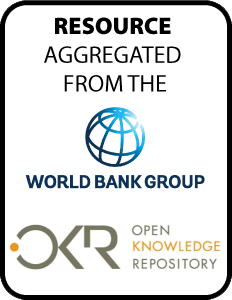Resource information
There is increasing interest in climate
change issues in Indonesia particularly in the lead-up to
the COP13 or Copenhagen meeting in Bali in December 2007
when there was renewed focus on Indonesia as the third
largest emitter of greenhouse gases (GHG) in the world due
to deforestation, peat-land degradation, and forest fires.
In Indonesia, the agriculture sector employs the largest
share, 45 percent, of Indonesia's labor and contributes
the second largest share, 17.5 percent, of gross domestic
product (GDP). Poverty is a largely rural phenomenon. In
2002, 61 percent of the poor earned their livelihood in the
agricultural sector while 63 percent of Indonesia's
poor population resided in rural areas. In Indonesia, the
agriculture sector is the main source of methane emissions
as it accounts for 59 percent of total national emissions.
Seventy percent of the emissions from the agriculture sector
are generated by rice cultivation. Methane emission in
agriculture is mainly due to inefficient practices such as
over-irrigation, misuse of fertilizer, and poor livestock
feeding practices. The study is organized as follows: the
introductory chapter is followed by a chapter that discusses
the key elements of adaptation in a general agricultural
context. This is followed by a review of the literature on
climate change in Indonesia and the implications for
improving rice productivity in the context of concomitant
changes in land use. Chapter four focuses on two key issues
for economic and policy options as part of the adaptation
agenda. The first relates to the important role of Bulog,
(logistics agency) and the second pertains to the current
structure of the fertilizer subsidies. The final chapter
presents conclusions and recommendations.


